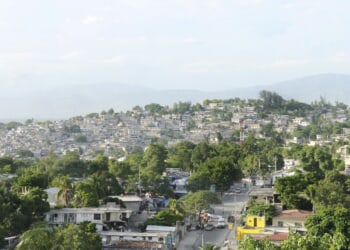Every year on the Fourth of July, families and friends across the United States flock to lakes, rivers, and coastal waterways to celebrate the nation’s independence. They bring with them American flags, fireworks, food, and a strong desire to enjoy the water. But amid the celebration lies a sobering fact: July 4th is consistently the deadliest day of the year for recreational boating.
According to the U.S. Coast Guard’s 2023 Recreational Boating Statistics, July 4th has the highest concentration of boating accidents and fatalities of any single day on the calendar. While recreational boating is a beloved tradition, the risks are dramatically heightened during this holiday weekend. This article examines the core factors behind the danger, what they reveal about human behavior, and how education and decision-making can turn the tide.
A Dangerous Convergence
The Fourth of July combines several risk factors that exist year-round but rarely all at once. First, there’s sheer volume. Popular boating destinations are often packed beyond capacity, creating traffic on the water akin to a holiday highway jam. Second, alcohol consumption is widespread, as many people see boating and drinking as natural companions to celebration. Third, many boaters on July 4th are either inexperienced or only operate a vessel once or twice a year. Add in nighttime fireworks and navigation, and the result is a convergence of dangers with deadly consequences.
In 2023, the Coast Guard recorded 3,844 recreational boating accidents, resulting in 564 deaths and over 2,100 injuries. Of those who drowned, 87% were not wearing a life jacket. Perhaps most revealing, 74% of those fatal incidents involved operators who had not completed a boater safety course. These statistics underscore not just individual error but also a widespread lack of preparedness.
Overcrowded Waterways
One of the most significant contributors to July 4th boating incidents is overcrowding. Waterways that are usually manageable become congested with boats of all sizes and speeds. Some boaters anchor for fireworks shows, while others cruise, tube, or race to find the best view. With so many operators in one space, reaction time shortens , and the margin for error disappears. Even experienced boaters can find themselves in dangerous situations simply because of the density of vessels around them.
Overcrowding also leads to stress, confusion, and frustration—all of which can impair judgment. Simple rules, such as maintaining a safe distance or yielding the right of way, are often forgotten or ignored. And when things go wrong in a crowded space, the consequences multiply. A minor collision between two boats can quickly escalate into capsizing, injury, or a chain reaction of incidents.
Alcohol Use on the Water
Boating under the influence (BUI) is illegal in all 50 states, yet it remains one of the leading causes of boating fatalities. Alcohol affects balance, judgment, and coordination, all of which are essential for safely operating a vessel. On July 4th, the combination of high temperatures, sun exposure, and celebratory drinking can accelerate the effects of intoxication. People often underestimate how impaired they are, especially when surrounded by others who are also drinking.
According to the National Association of State Boating Law Administrators, alcohol use is involved in approximately 23% of all boating deaths. To counter this, agencies across the country participate in Operation Dry Water, a nationwide enforcement and education campaign aimed at reducing BUI incidents during the July 4th weekend. However, enforcement alone cannot solve the problem—the culture around drinking and boating needs to shift.
The Dangers of Nighttime Navigation
Fireworks are a central part of Independence Day celebrations, and many people view them from the water. While this offers a unique vantage point, it also introduces a set of new risks. Navigating after dark is difficult even under ideal circumstances. On July 4th, visibility is often limited, making it hard to identify markers, and navigation lights from other boats may be confusing or malfunctioning.
Exiting the water after fireworks can be chaotic. Dozens or even hundreds of boats may attempt to leave the same area at once, often with limited lighting, inexperienced operators, and little coordination. This is when many collisions and groundings occur. The risk is exceptionally high when boaters are tired, disoriented, or under the influence.
Inexperience and Overconfidence
A large portion of July 4th boaters are casual operators. Some rent boats for the day or use one they haven’t touched since last summer. Many assume that boating is intuitive and requires no formal instruction. Unfortunately, this overconfidence leads to serious consequences. The Coast Guard reports that three out of four fatal boating incidents involve operators with no safety training.
Boater education courses teach more than just rules; they train people to assess conditions, recognize hazards, and make informed decisions. Without this foundation, new or seasonal boaters are ill-equipped to handle emergencies. Even something as simple as retrieving a person from the water requires skill and practice.
The Role of Safety Equipment
Too often, boaters launch without checking whether they have the proper safety gear. Life jackets may be on board but stored in compartments, unfastened, or the wrong size. Radios, fire extinguishers, and flares are frequently missing, expired, or non-functional. In emergencies, this oversight can be fatal. The Coast Guard emphasizes that every passenger should wear a life jacket, not just children or weak swimmers.
Preparation is one of the few variables boaters can fully control. A thorough safety check before launching takes just minutes but can prevent tragedy. Boaters should treat this step as seriously as pilots treat a preflight checklist.
What This Teaches Us About Risk
Boating accidents on July 4th offer a real-time case study in how humans assess and respond to risk, especially in celebratory or emotionally heightened situations. When people are in a festive mindset, they often prioritize enjoyment over safety, under the assumption that “nothing bad will happen.” This kind of thinking is reinforced by group behavior. If others around them aren’t wearing life jackets, skipping safety checks, or drinking while boating, they’re more likely to do the same. The perception of risk becomes socially diluted.
This behavioral pattern is not limited to boating. Research in behavioral economics and cognitive psychology has shown that people consistently underestimate low-probability but high-impact risks—a phenomenon known as the availability heuristic. In simple terms, if someone hasn’t personally seen a boating accident or known someone who drowned, they’re less likely to perceive it as a real threat, even if statistics say otherwise.
Studies in risk homeostasis theory, first developed by Gerald Wilde, suggest that individuals have a target level of risk they are willing to accept. When they perceive a situation as low-risk—such as calm water on a sunny day—they may compensate by taking more dangerous actions, like speeding, drinking, or leaving safety gear unused. This concept explains why even experienced boaters can make reckless choices when they feel overly comfortable.
Social psychology adds another layer. The theory of social proof, popularized by psychologist Robert Cialdini, suggests that people often look to others for guidance when deciding how to behave in uncertain situations. If no one on a boat is wearing a life jacket, others may take that as a cue that it isn’t necessary, even if they would have chosen otherwise alone.
These psychological principles also help explain behaviors in other domains. For example:
- Teen drivers are more likely to speed or drive distracted when peers are present.
- Athletes often push through injuries because they see teammates doing the same.
- Online users may share personal information or engage in risky challenges simply because they see others doing it without consequence.
In all of these cases, a common thread is a misjudgment of risk, often amplified by emotion, social dynamics, or familiarity with the setting.
By looking closely at why July 4th is the most dangerous day on the water, we gain insight into how these mental models operate—and how we might begin to change them. Education plays a critical role, not just by delivering safety facts, but by helping people develop mental habits that challenge assumptions, consider consequences, and resist peer pressure.
To cultivate safer behaviors, especially among young people, we must go beyond rule enforcement. We must teach students how to think about risk: to slow down in moments of excitement, to ask “what if,” and to recognize that following the crowd is not always the safest course. These skills apply far beyond the water—they’re essential to making thoughtful, life-protecting choices in every area of life.
Members of the editorial and news staff of the Daily Caller were not involved in the creation of this content.








![Florida Man With Violent History Arrested for Choking a Cop [WATCH]](https://www.right2024.com/wp-content/uploads/2025/06/Eleven-Stabbed-in-Attack-at-Salem-Homeless-Shelter-Across-From-350x250.jpg)







